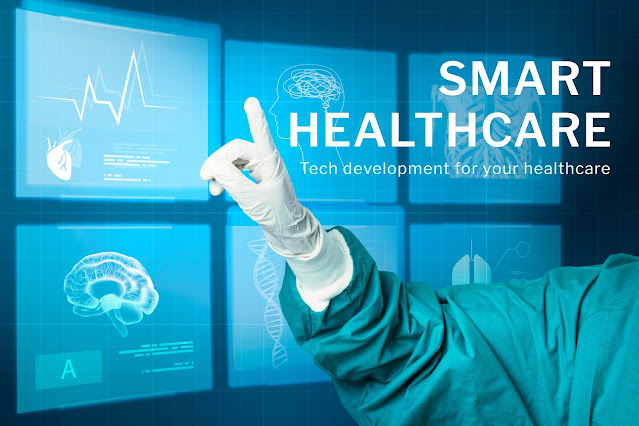How to Choose the Best LIMS Software
Digital healthcare has revolutionized the way medical professionals manage patient information, conduct tests, and streamline processes. In this era of technological advancement, choosing the right Laboratory Information Management System (LIMS) software is crucial for healthcare providers, ensuring seamless operations, accurate data management, and enhanced patient care.
1. Introduction
LIMS software plays a pivotal role in digital healthcare, serving as a comprehensive solution for managing laboratory data, integrating with Electronic Health Record (EHR) systems, and facilitating efficient practice and hospital management. As the healthcare landscape continues to evolve, selecting the best LIMS software becomes paramount.
2. Understanding LIMS Software
LIMS software is designed to centralize and organize laboratory information, making it an essential component of digital healthcare infrastructure. It seamlessly integrates with EHR systems, ensuring a cohesive approach to patient data management. Understanding the core functions and features of LIMS is the first step toward making an informed choice.
3. Key Features to Look for
When evaluating LIMS software, consider its lab management capabilities, and integration with practice management and hospital management software. A robust LIMS system should provide a holistic solution to meet the diverse needs of healthcare professionals.
4. Benefits of Implementing LIMS Software
Implementing LIMS software brings numerous advantages, including streamlined data management, enhanced efficiency in lab processes, and ultimately, improved patient care. These benefits contribute to the overall effectiveness of healthcare delivery.
5. Considerations for Different Healthcare Settings
It's crucial to tailor LIMS software to the specific needs of different healthcare settings. For smaller clinics, the focus may be on simplicity and cost-effectiveness, while larger hospitals require scalable solutions to handle vast amounts of data.
6. Security and Compliance
Given the sensitivity of healthcare data, security, and compliance are non-negotiable. The chosen LIMS software should adhere to industry standards, ensuring patient information is secure and regulatory requirements are met.
7. Vendor Selection Criteria
Choosing the right vendor is as important as selecting the software itself. Consider the vendor's reputation, read reviews from other healthcare professionals, and assess the level of customization they offer to meet unique requirements.
8. Cost Analysis
While the initial investment in LIMS software is a consideration, it's equally important to analyze the long-term benefits and potential hidden costs. A comprehensive cost analysis should include factors like training, support, and scalability.
9. User-Friendly Interface
A user-friendly interface is paramount for successful adoption by healthcare professionals. Ensure that the chosen LIMS software provides an intuitive experience and offers adequate training and support options.
10. Integration with Other Systems
Compatibility with existing software is crucial for the seamless integration of LIMS into the healthcare workflow. Assess how well the software aligns with other systems to avoid disruptions.
11. Future-Proofing Your Choice
In the rapidly evolving landscape of healthcare technology, it's essential to choose LIMS software that can adapt to future advancements. Consider the vendor's commitment to updates, support, and integration with emerging technologies.
12. Real-Life Implementation Stories
Explore case studies on successful LIMS software implementations. Learn from the experiences of others, understanding both the benefits and challenges faced during the integration process.
13. Industry Trends in LIMS Software
Stay informed about the latest trends in LIMS software and digital healthcare. Innovations such as AI integration, mobile accessibility, and data analytics are shaping the future of lab management.
14. Comparative Analysis of Top LIMS Software
Conduct a comparative analysis of popular LIMS software options in the market. Evaluate the pros and cons of each, considering factors such as functionality, user experience, and vendor reputation.
15. Conclusion
In conclusion, choosing the best LIMS software requires a comprehensive understanding of the software's features, vendor reliability, cost considerations, and the ability to adapt to future trends. By carefully evaluating these aspects, healthcare professionals can make informed decisions that positively impact patient care and overall operational efficiency.
Frequently Asked Questions
Is LIMS software only suitable for large hospitals, or can it be scaled for smaller clinics?
LIMS software can be adapted for both large hospitals and smaller clinics. It's essential to choose a solution that aligns with the specific needs and scale of the healthcare setting.
What security measures should LIMS software have to ensure the protection of patient data?
LIMS software should adhere to industry standards for data security, including encryption, access controls, and regular audits. Compliance with healthcare regulations is crucial.
How often should healthcare professionals expect software updates for their chosen LIMS system?
The frequency of software updates depends on the vendor. Ideally, healthcare professionals should choose a vendor committed to regular updates, ensuring the software stays current with industry advancements.
What kind of training and support options are typically offered with LIMS software?
Training and support options vary among vendors. Look for those that provide comprehensive training programs and responsive support to assist healthcare professionals in using the software effectively.
Can LIMS software integrate with other healthcare management systems already in use?
Yes, LIMS software should ideally integrate seamlessly with existing healthcare management systems. Compatibility with other software ensures a smooth workflow within the healthcare environment.
Recommended Articles:
5 best reasons why you should choose a LIMS with barcode utilization
Doctor's Guide: Mastering Online Presence in Digital Healthcare
Digital Focus in Healthcare: Workflow with LIMS and Digital Solutions
Impact of Technology in Dental Clinics: Revolutionizing Patient Care & Efficiency
The Advantages of Cloud-Based Pathology Lab Software Over Free Offline Solutions
The Power of Online Appointments and Practice Management Software
Prepare Your Dental Clinic for Dental Practice Management Software: Essential Tips
LIMS: The Good, the Bad, and the Ugly - A Comprehensive Analysis
The Intersection of Artificial Intelligence and Laboratory Operations
Root Canal Treatment Demystified: Facts, Benefits, and Digital Healthcare Integration
Random Blood Sugar (RBS) Report Format: Enhancing Diagnostic Precision and Patient Care



Comments
Post a Comment